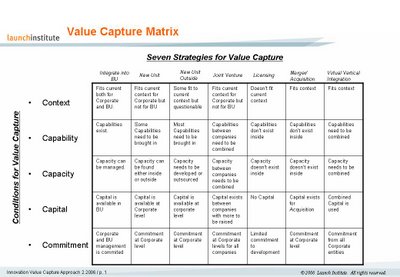G8 Symposium on Innovation
During the recent G8 Summit in Russia a special session, the G8 Business and University Leaders Symposium on Innovation, was conducted to discuss issues related to universities and business http://en.g8russia.ru/page_work/25.html. The session brought together some great minds from the represented countries to discuss the issues they are confronting related to innovation and how they are confronting these issues.
The outcome of the session was a joint statement that was conveyed to the leaders of the represented countries:
WORKING MEETINGS SUMMIT2006
July 11Report to the Leaders place Moscow
Representatives of universities, government, and the private sector met in Moscow on July 11, 2006 to confirm their commitment to building global knowledge society in the 21st century.
In the new global economy, economic growth and social cohesion can be only sustained via production and commercialization of knowledge. This creates a crucial role for the universities that are uniquely positioned to produce new ideas, advanced skills and research, and to participate in industrial innovation. Building flexible, effective, and diverse tertiary education is a priority for the G8 countries which will provide tangible benefits to all the nations.
Building a global knowledge society is only feasible through a public-private partnership of universities, governments and corporations, effectively developing “innovational ecosystems” around the universities. Governments should focus on (i) providing incentives for entrepreneurship, flexibility and innovation within universities, and for cooperation between universities and corporations; (ii) providing global public goods such as support for fundamental research, mobility of faculty and students, and basic training in science, math, and foreign languages. Governments should encourage collaboration and diversity in higher education, provide autonomy to the universities, remove barriers for organizational innovation within academia, and promote new forms of university-corporation partnerships both within and across national borders.
To accomplish their mission of the cornerstone of the global knowledge society, the universities themselves should be at the cutting edge of innovation. They should build multi-faceted partnerships with the private sector, develop new programs, and adopt new formats and methods of learning. The successful universities will be those which recognize the corporations’ needs for applied research and the demand for skills from the corporations and the life-long learners and manage to exploit the synergies between traditional and innovative teaching, between fundamental and applied research.
The competitive advantage in the modern corporate sector is created through innovation in products, services and processes. The leading corporations will be the ones that attract the best talent and provide them with incentives for innovation. It is therefore in the best interest of the universities and the private sector to work together on designing and implementing new teaching curricula and research agendas.
The creation of "innovational ecosystems" around universities is an interesting challenge on four fronts:
1. Academics are often quite removed from the needs of business and are more focused on their "basic" research than on "applied" research.
2. Businesses do not want to take the time to get to know the capabilities of universities and would rather make donations to schools than spend their time.
3. Universities tend to focus more on teaching start-up entrepreneurship rather than "corporate entrepreneurship.
4. The issue of intellectual property protection/ownership looms large.
But, in fact, corporate entrepreneurial linkages between universities and business do exist and have been very successful. Some are:
Carnegie Mellon Center for Technology Transferhttp://www.carnegiemellonctt.com/
Uiversity of Warwick's Innovation Center http://www.warwicksciencepark.co.uk/properties/innovation_centres.html
The University of Iowa's Technology Transfer Center
http://research.uiowa.edu/techtransfer/tic_main.htm
and Georgia Tech's Enterprise Innovation Center http://www.edtv.gatech.edu/
Key to all of these is to "teach" the skills for corporate entrepreneurship, which is a much different set of skills and requirements than the "startup" mindset. What are these skills? How does a company go about creating the right "innovation ecosystems" to ensure ideas are not only recognized, but commercialized? What are the critical success factors for Universities?


